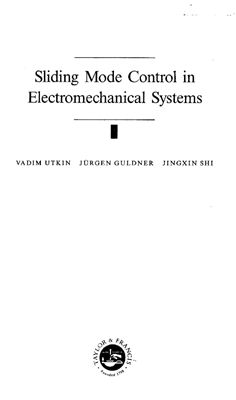Taylor & Francis, 1999 - Всего страниц: 325
Sliding Mode Control (SMC) is gaining increasing importance as a universal design tool for the robust control of linear and nonlinear systems. The strengths of sliding mode controllers result from the ease and flexibility of the methodology for their design and implementation. They provide inherent order reduction, direct incorporation of robustness against system uncertainties and disturbances, and an implicit stability proof. They also allow for the design of high performance control systems at low costs. SMC is particularly useful for electro-mechanical systems because of its discontinuous structure. In fact, since the hardware of many electro-mechanical systems (such as electric motors) prescribes discontinuous inputs, SMC has become the natural choice for direct implementation. The book is intended primarily for engineers and establishes an interdisciplinary bridge between control science, electrical and mechanical engineering.
Sliding Mode Control (SMC) is gaining increasing importance as a universal design tool for the robust control of linear and nonlinear systems. The strengths of sliding mode controllers result from the ease and flexibility of the methodology for their design and implementation. They provide inherent order reduction, direct incorporation of robustness against system uncertainties and disturbances, and an implicit stability proof. They also allow for the design of high performance control systems at low costs. SMC is particularly useful for electro-mechanical systems because of its discontinuous structure. In fact, since the hardware of many electro-mechanical systems (such as electric motors) prescribes discontinuous inputs, SMC has become the natural choice for direct implementation. The book is intended primarily for engineers and establishes an interdisciplinary bridge between control science, electrical and mechanical engineering.

